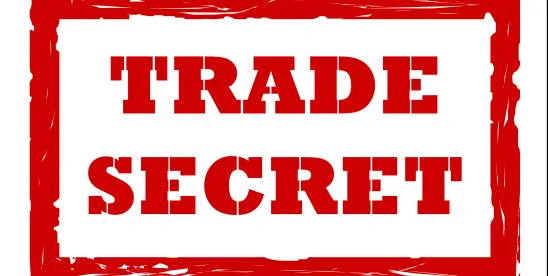The Virginia Court of Appeals recently issued a consequential trade secrets ruling, reversing a jury’s multi-billion dollar damages award, and finding that the trial court committed several legal errors which improperly led to the largest damages verdict in Virginia’s history. The case, Pegasystems Inc. v. Appian Corp., No. 1399-22-4, involved two companies in the business process management (BPM) industry, each of whom offer platforms that enable third party business customers to build complex software applications using “low-code application development platforms.”
Years before the lawsuit was filed, Pega hired consultant Youyong Zou on a part-time basis to inform Pega about Appian’s BPM platform. Zou had access to Appian’s platform through his main employer, government contractor Serco, which was a business partner of Appian and licensed Appian’s platform. Zou provided Pega with presentations demonstrating Appian’s platform, illustrating its strengths and weaknesses, and Pega used that information to improve its own platform and also to identify and capitalize on Appian’s weaknesses. Later, Appian hired Pega’s former head of competitive intelligence, John Petronio, as a consultant, who informed Appian about Zou’s “spy” work for Pega. Appian responded by suing Pega and Zou, claiming inter alia misappropriation of trade secrets under the Virginia Uniform Trade Secrets Act, Code § 59.1-336 et seq. (VUTSA). Appian alleged that Pega misappropriated three categories of trade secrets: (1) functions of Appian’s platform which Pega used; (2) knowledge relating to weaknesses of Appian’s platform which Pega utilized; and (3) access to Appian’s confidential documentation, such as its user manual, which assisted Pega in copying Appian’s strengths and exploiting its weaknesses. The jury returned a verdict in Appian’s favor and awarded damages of more than $2 billion.
On appeal, Pega argued that Appian failed to prove the existence of its trade secrets, failed to identify them with particularity, and did not take reasonable measures under the circumstances to safeguard them. The Court of Appeals disagreed with Pega, finding that (i) the record showed that Appian’s trade secrets were not generally known nor readily ascertainable, (ii) Appian provided considerable evidence at trial that it took careful steps to safeguard its secrets, including through employing “terms of use and license agreements,” restricting “access to documentation,” and using “firewalls,” all traditionally-accepted methods for protecting trade secrets, and (iii) that the record was largely devoid of Appian resellers making wholesale disclosures of the targeted information to prospective buyers. The appellate court was persuaded as well that the evidence showed that Pega used a “spy” to obtain access to Appian’s software and confidential “documentation.”
However, despite these findings regarding the trade secrets at issue, in reversing the jury verdict, the Court of Appeals found that the trial court improperly instructed the jury as to Appian’s burden in demonstrating damages causation from the misappropriation. The trial court instructed the jury to apply a “burden-shifting” approach under which, upon proving a misappropriation of a trade secret, Appian’s only further burden was to “establish[] by . . . greater weight of the evidence Pegasystems’ sales.” The result was a presumption that Appian’s trade secrets were the but-for cause of all of Pega’s sales—including product lines that did not use any information associated with Appian’s claimed trade secrets. By permitting Appian to use all of Pega’s sales as damages, the instruction removed any causation nexus between the sales and the misappropriation. The Court of Appeals found that the erroneous jury instruction was at odds with the “plain language” of VUTSA statutory text, which placed the burden of proving unjust enrichment damages caused by misappropriation on the complainant. To that end, the Court of Appeals noted that, different from the text of the Uniform Trade Secrets Act (UTSA) enacted by 48 other states, Virginia’s statute “expressly codified” “language clarifying that the burden to ‘prove’ damages is on the complainant,” a distinction that the panel viewed to be a “deliberate and intentional” choice by the legislature.
The Court of Appeals further found that the trial court erred in foreclosing Pega from presenting its own damages evidence (i.e., that many of Pega’s total sales were in areas in which Appian did not even compete with Pega), and such error was consequential given the court’s burden-shifting instruction on damages. And, in view of the ultimate award in excess of two billion dollars, this error was not harmless, and instead “exponentially increased the likelihood of a runaway damages verdict that had no correlation to proximate cause.” The Court of Appeals concluded that the “complex trial ventured into uncharted legal waters and culminated in a multi-billion dollar damages award” which required reversal.
While the ruling is one on Virginia state law, and grounded in the particular text of the Virginia trade secrets statute, it nevertheless provides valuable broader instruction (and perhaps caution) on the very real consequences of jury instructions and evidentiary limitations in trade secret cases, including as to the important issue of burden of proof on damages.



 />i
/>i

